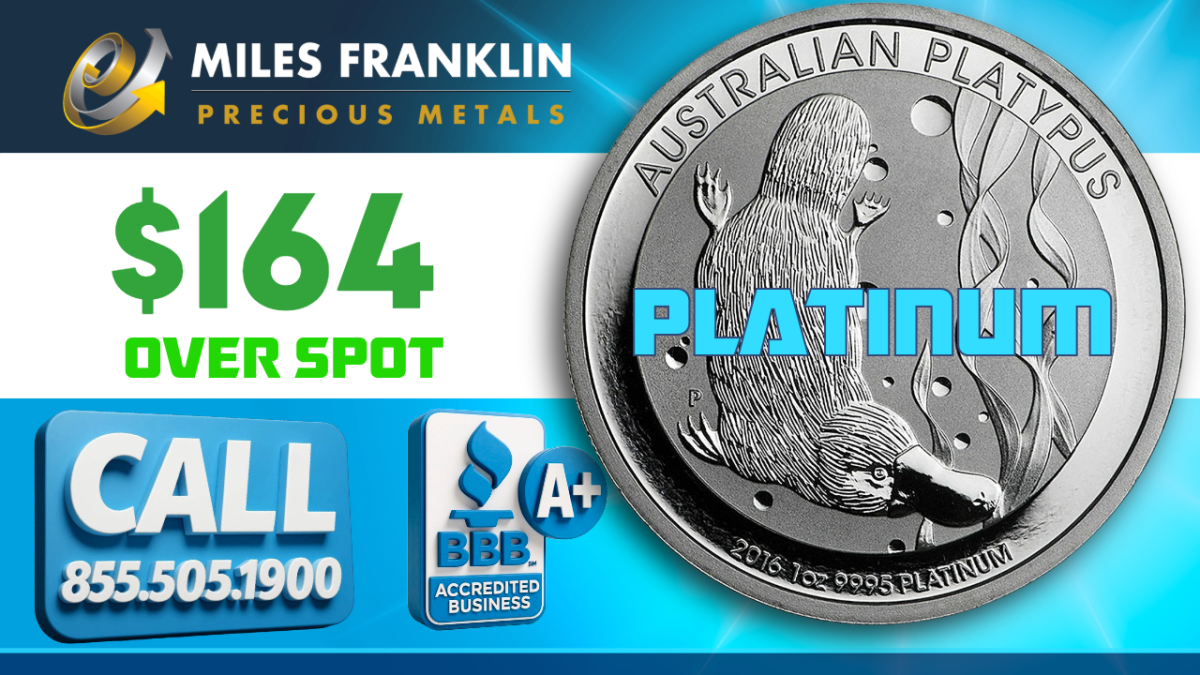TORONTO, Oct. 30, 2018 /PRNewswire/ – Denison Mines Corp. (“Denison” or the “Company”) (DML: TSX, DNN: NYSE MKT) today announces that it filed a technical report under Canadian Securities Administrators’ National Instrument 43-101 Standard of Disclosure for Mineral Projects for its 90% owned Wheeler River Project in Saskatchewantitled “Pre-feasibility Study for the Wheeler River Uranium Project, Saskatchewan, Canada” dated October 30, 2018 with an effective date of September 24, 2018.
The technical report is posted on the Company’s website at www.denisonmines.com and is available under its profile on SEDAR at www.sedar.com and on EDGAR at www.sec.gov/edgar.shtml. This report supports the disclosure made by the Company in its news release dated September 24, 2018 (the “News Release”) and there are no material differences contained in the technical report from the information previously disclosed in the News Release.
As outlined in the News Release, the PFS considers the potential economic merit of co-developing the Phoenix and Gryphon deposits. The high-grade Phoenix deposit is designed as an In-Situ Recovery (“ISR”) mining operation, with associated processing to a finished product occurring at a plant to be built on site at Wheeler River. The Gryphon deposit is designed as an underground mining operation, utilizing a conventional long hole mining approach with processing of mine production assumed at Denison’s 22.5% owned McClean Lake mill.
Taken together, the project is estimated to have mine production of 109.4 million pounds U3O8 over a 14-year mine life, with a base case pre-tax Net Present Value (“NPV”) of $1.31 billion (8% discount rate), Internal Rate of Return (“IRR”) of 38.7%, and initial pre-production capital expenditures of $322.5 million. The base-case economic analysis assumes uranium sales are made at UxC Consulting Company, LLC’s (“UxC”) annual estimated spot price for mine production from the Phoenix deposit (from ~US$29/lb U3O8to US$45/lb U3O8), and a fixed price for mine production from the Gryphon deposit (US$50/lb U3O8).
Using the same price assumed for the project’s 2016 Preliminary Economic Assessment (“2016 PEA”), a fixed uranium price of US$44/lb U3O8 (“PEA Reference Case”), the PFS produces a combined pre-tax project NPV of $1.41 billion – representing roughly 275% of the $513 million pre-tax project NPV estimated in the 2016 PEA.
Pre-Feasibility Study Highlights
- Phoenix delivers exceptional operating costs and manageable initial capex with ISR
|
Mine life |
10 years (6.0 million lbs U3O8 per year on average) |
|
Probable reserves(1) |
59.7 million lbs U3O8 (141,000 tonnes at 19.1% U3O8) |
|
Average cash operating costs |
$4.33 (US$3.33) per lb U3O8 |
|
Initial capital costs |
$322.5 million |
|
Base case pre-tax IRR(2) |
43.3% |
|
Base case pre-tax NPV8%(2) |
$930.4 million |
|
Base case price assumption |
UxC spot price(3) (from ~US$29 to US$45/lb U3O8) |
|
Operating profit margin(4) |
89.0% at US$29/lb U3O8 |
|
All-in cost(5) |
$11.57 (US$8.90) per lb U3O8 |
|
(1) |
See below for additional information regarding Probable reserves; |
|
(2) |
NPV and IRR are calculated to the start of pre-production activities for the Phoenix operation in 2021; |
|
(3) |
Spot price forecast is based on “Composite Midpoint” scenario from UxC’s Q3’2018 Uranium Market Outlook (“UMO”) and is stated in constant (not-inflated) dollars; |
|
(4) |
Operating profit margin is calculated as uranium revenue less operating costs, divided by uranium revenue. Operating costs exclude all royalties, surcharges and income taxes; |
|
(5) |
All-in cost is estimated on a pre-tax basis and includes all project operating costs and capital costs, divided by the estimated number of pounds U3O8 to be produced. |
- Gryphon leverages existing infrastructure and provides additional low-cost production
|
Mine life |
6.5 years (7.6 million lbs U3O8 per year on average) |
|
Probable reserves(1) |
49.7M lbs U3O8 (1,257,000 tonnes at 1.8% U3O8) |
|
Average cash operating costs |
$15.21 (US$11.70) per lb U3O8 |
|
Initial capital costs |
$623.1 million |
|
Base case pre-tax IRR(2) |
23.2% |
|
Base case pre-tax NPV8%(2) |
$560.6 million |
|
Base case price assumption |
US$50 per pound U3O8 |
|
Operating profit margin(3) |
77.0% at US$50/lb U3O8 |
|
All-in cost(4) |
$29.67 (US$22.82) per lb U3O8 |
|
(1) |
See below for additional information regarding Probable reserves; |
|
(2) |
NPV and IRR are calculated to the start of pre-production activities for the Gryphon operation in 2026; |
|
(3) |
Operating profit margin is calculated as uranium revenue less operating costs, divided by uranium revenue. Operating costs exclude all royalties, surcharges and income taxes; |
|
(4) |
All-in cost is estimated on a pre-tax basis and includes all project operating costs and capital costs, divided by the estimated number of pounds U3O8 to be produced. |
- Selection of ISR mining method for high-grade Phoenix deposit – Following the completion of the 2016 PEA, the Company evaluated 32 alternate mining methods to replace the high-cost Jet Bore Mining System (“JBS”) assumed for the Phoenix deposit in the 2016 PEA. The suitability of ISR mining for Phoenix has been confirmed by significant work completed in the field and laboratory – including drill hole injection, permeability, metallurgical leach, agitation, and column tests. Results demonstrate high rates of recovery in both extraction (+90%) and processing (98.5%) following a simplified flow sheet that precipitates uranium directly from the uranium bearing solution (“UBS”), without the added costs associated with ion exchange or solvent extraction circuits.
- Novel application of established mining technologies – Given the unique geological setting of the Phoenix deposit, straddling the sub-Athabasca unconformity in permeable ground, the project development team has combined the use of existing and proven technologies from ISR mining, ground freezing, and horizontal directional drilling to create an innovative model for in situ uranium extraction in the AthabascaBasin. While each of the technologies are well established, the combination of technologies results in a novel mining approach applicable only to deposits occurring in a similar geological setting to Phoenix – which now represents the first deposit identified for ISR mining in the Athabasca Basin.
- Environmental advantages of ISR mining at Phoenix – The Company’s evaluation of the ISR mining method for Phoenix has also identified several significant environmental and permitting advantages, namely the absence of tailings generation, the potential for no water discharge to surface water bodies, and the potential to use the existing Provincial power grid to operate on a near zero carbon emissions basis. In addition, the use of a freeze wall, to encapsulate the ore zone and contain the mining solution used in an ISR operation, eliminates common environmental concerns associated with ISR mining and facilitates a controlled reclamation of the site. Taken together, the Phoenix operation has the potential to be one of the most environmentally friendly mining operations in the world. Owing largely to these benefits, consultation with regulatory agencies and stakeholder communities, to date, has been encouraging regarding the use of ISR mining.
The PFS has been completed in accordance with NI 43-101, Canadian Institute of Mining, Milling and Petroleum (CIM) standards and best practices, as well as other standards such as the AACE Cost Estimation Standards.
Wheeler River Project
The Wheeler River project is the largest undeveloped uranium project in the eastern portion of the Athabasca Basin region in northern Saskatchewan, Canada. The project is situated in close proximity to important regional infrastructure, including the Provincial electrical transmission grid and an all-season Provincial highway. Since Denison became the operator of the project in 2004, two high-grade uranium deposits have been discovered and now account for combined Mineral Reserves and Mineral Resources (100% Basis) as follows:
- Probable Mineral Reserves of 109.4 million pounds U3O8
|
Deposit |
Classification |
Tonnes |
Grade |
Lbs U3O8 |
|
Phoenix |
Probable |
141,000 |
19.1% |
59.7 million |
|
Gryphon |
Probable |
1,257,000 |
1.8% |
49.7 million |
|
Total |
Probable |
1,398,000 |
3.5% |
109.4 million |
|
Notes: |
|
|
(1) |
Reserve statement is as of September 24, 2018; |
|
(2) |
CIM definitions (2014) were followed for classification of mineral reserves; |
|
(3) |
Mineral reserves for the Phoenix deposit are reported at the mineral resource cut-off grade of 0.8% U3O8. The mineral reserves are based on the block model generated for the May 28, 2014 mineral resource estimate. A mining recovery factor of 85% has been applied to the mineral resource above the cut-off grade; |
|
(4) |
Mineral reserves for the Gryphon deposit are estimated at a cut-off grade of 0.58% U3O8 using a long-term uranium price of USD$40/lb, and a USD$/CAD$ exchange rate of 0.80. The mineral reserves are based on the block model generated for the January 30, 2018 mineral resource estimate. The cut-off grade is based on an operating cost of CAD$574/tonne, milling recovery of 97%, and 7.25% fee for Saskatchewan royalties; |
|
(5) |
Mineral reserves include diluting material and mining losses; |
|
(6) |
Mineral reserves are stated at a processing plant feed reference point; |
|
(7) |
Numbers may not add due to rounding. |
- Indicated Mineral Resources (inclusive of Reserves) of 132.1 million pounds U3O8 (1,809,000 tonnes at an average grade of 3.3% U3O8); plus
- Inferred Mineral Resources of 3.0 million pounds U3O8 (82,000 tonnes at an average grade of 1.7% U3O8).
The PFS does not include any economic analysis based on estimated Inferred Mineral Resources.
The project is a joint venture between Denison (90% and operator) and JCU (Canada) Exploration Company Limited (“JCU”) (10%).
Qualified Persons
The disclosure of the results of the PFS contained in this news release, including the mineral reserves, was reviewed and approved by Peter Longo, P. Eng, MBA, PMP, Denison’s Vice-President, Project Development, who is a Qualified Person in accordance with the requirements of NI 43-101.
The disclosure of a scientific or technical nature regarding the Phoenix and Gryphon deposits, including the mineral resources, contained in this news release was reviewed and approved by Dale Verran, MSc, P.Geo., Pr.Sci.Nat., Denison’s Vice President, Exploration, who is a Qualified Person in accordance with the requirements of NI 43-101.
For a description of the data verification, assay procedures and the quality assurance program and quality control measures applied by Denison, please see Denison’s Annual Information Form dated March 27, 2018 filed under the Company’s profile on SEDAR at www.sedar.com.
About Denison
Denison is a uranium exploration and development company with interests focused in the Athabasca Basin region of northern Saskatchewan, Canada. In addition to its 90.0% owned Wheeler River project, which ranks as the largest undeveloped high-grade uranium project in the infrastructure rich eastern portion of the Athabasca Basin region, Denison’s Athabasca Basin exploration portfolio consists of numerous projects covering approximately 320,000 hectares. Denison’s interests in the Athabasca Basin also include a 22.5% ownership interest in the McClean Lake joint venture (“MLJV”), which includes several uranium deposits and the McClean Lake uranium mill, which is currently processing ore from the Cigar Lake mine under a toll milling agreement, plus a 25.17% interest in the Midwest and Midwest A deposits, and a 65.45% interest in the J Zone deposit and Huskie discovery on the Waterbury Lake property. Each of Midwest, Midwest A, J Zone and Huskie are located within 20 kilometres of the McClean Lake mill.
Denison is also engaged in mine decommissioning and environmental services through its Denison Environmental Services division and is the manager of Uranium Participation Corp., a publicly traded company which invests in uranium oxide and uranium hexafluoride.
Cautionary Statement Regarding Forward-Looking Statements
Certain information contained in this press release constitutes “forward-looking information”, within the meaning of the United States Private Securities Litigation Reform Act of 1995 and similar Canadian legislation concerning the business, operations and financial performance and condition of Denison.
Generally, these forward-looking statements can be identified by the use of forward-looking terminology such as “plans”, “expects”, “budget”, “scheduled”, “estimates”, “forecasts”, “intends”, “anticipates”, or “believes”, or the negatives and / or variations of such words and phrases, or state that certain actions, events or results “may”, “could”, “would”, “might” or “will be taken”, “occur”, “be achieved” or “has the potential to”. In particular, this press release contains forward-looking information pertaining to the results of, and estimates, assumptions and projections provided in, the PFS, including future development methods and plans, market prices, costs and capital expenditures; the Company’s current plans with respect to the commencement and completion of an EA and feasibility study on the project; assumptions regarding Denison’s ability to obtain all necessary regulatory approvals to commence development; Denison’s percentage interest in its projects and its agreements with its joint venture partners; and the availability of services to be provided by third parties. Statements relating to “mineral resources” are deemed to be forward-looking information, as they involve the implied assessment, based on certain estimates and assumptions that the mineral resources described can be profitably produced in the future.
Forward looking statements are based on the opinions and estimates of management as of the date such statements are made, and they are subject to known and unknown risks, uncertainties and other factors that may cause the actual results, level of activity, performance or achievements of Denison to be materially different from those expressed or implied by such forward-looking statements. Denison faces certain risks, including the inability to permit or develop the project as currently planned, the unpredictability of market prices, the use of mining methods which are novel and untested in the AthabascaBasin, events that could materially increase costs, changes in the regulatory environment governing the project lands, and unanticipated claims against title and rights to the project. Denison believes that the expectations reflected in this forward-looking information are reasonable but there can be no assurance that such statements will prove to be accurate and may differ materially from those anticipated in this forward looking information. For a discussion in respect of risks and other factors that could influence forward-looking events, please refer to the “Risk Factors” in Denison’s Annual Information Form dated March 27, 2018 available under its profile at www.sedar.com and its Form 40-F available at www.sec.gov/edgar.shtml. These factors are not, and should not be construed as being exhaustive.
Accordingly, readers should not place undue reliance on forward-looking statements. The forward-looking information contained in this press release is expressly qualified by this cautionary statement. Any forward-looking information and the assumptions made with respect thereto speaks only as of the date of this press release. Denison does not undertake any obligation to publicly update or revise any forward-looking information after the date of this press release to conform such information to actual results or to changes in its expectations except as otherwise required by applicable legislation.

View original content to download multimedia:http://www.prnewswire.com/news-releases/denison-announces-filing-of-technical-report-for-wheeler-river-pfs-300740885.html






